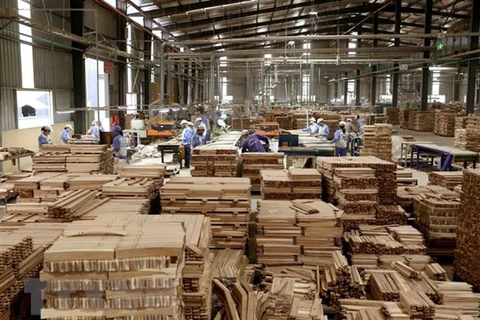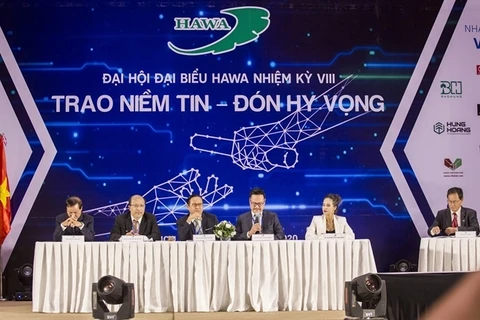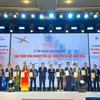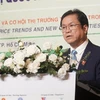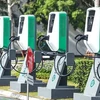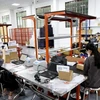Hanoi (VNA) – Hanoi is striving to expand handicraft export markets for an annual growth of 8 percent in export turnover under a programme on promoting the city’s industrial development for the 2021-25 period.
The programme also aims to create over 3,500 products of handicraft and fine arts for domestic and foreign markets.
In the coming time, Hanoi will invite foreign importers and international friends to its annual handicraft fair to seek partners.
Through the programme, the city also aims to support more than 10,000 businesses and industrial establishments in rural areas and help up to 70,000 rural labourers find stable jobs.
To fulfil the target, Hanoi will hold 300 vocational training courses for rural workers in the period and work to develop high quality human resources and raise management capacity in the sector.
It will also assist firms and industrial establishments in rural areas in investing in new equipment and applying advanced technology in a bid to increase productivity and quality products and save costs.
Hanoi is leading the country in handicraft products. In 2018, the export turnover of this sector reached 192 million USD. The sector generated jobs for nearly 1 million workers with an average annual income of about 55 million VND (2,365 USD) each.
The capital has 1,350 craft villages, accounting for 60 percent of the total nationwide.
These craft villages are diversified and cover different trade groups including processing forest and agricultural products, lacquer, bamboo, embroidery, mechanics, sculptures and garments.
Many handicraft products associated with rural culture are almost intact and have developed into a profession, such as the carpentry village of Chang Son in Thach That district.
Bat Trang commune, which has thousands of households engaged in pottery production, is another typical example.
Hanoi recently announced 275 products meeting standards of the “One Commune – One Product” (OCOP) programme at the municipal level in 2019, raising the total number of such products here to 301.
According to the local coordinating office for new-style countryside building, Hanoi classified 301 products last year, including six rated five stars, 207 others four stars, and 88 three stars. The city also stepped up promoting OCOP products, thus helping to improve consumers’ recognition of and trust in local goods.
During the first half of 2020, it has continued to enhance communication about the OCOP programme and issued temporary guidance on the management and use of OCOP marks and star ratings on labels and packages of products with at least three stars in the programme.
Meanwhile, local districts and towns have also selected products for classification at the district level.
Hanoi aims to rate about 800 – 1,000 OCOP products by the end of this year.
In 2019, Hanoi announced it would spend 265 billion VND (11.4 million USD) on implementing the local OCOP programme for the 2019 – 2020 period.
According to the plan, 100 percent of OCOP programme managers at commune-, district, and municipal level public agencies as well as at organizations, businesses and cooperatives registering for the programme will have to undergo training to improve their building capacity.
The capital city has set a goal of developing at least two eco-craft village models. It will look to improve the local origin tracing system for agro-forestry-fishery goods (https://hn.check.net.vn) and website serving State management and demand-supply connectivity related to Hanoi’s OCOP products (http://nongthonmoihanoi.gov.vn/).
The OCOP was initiated by the Ministry of Agriculture and Rural Development in 2008, following the model of Japan’s “One Village, One Product” and Thailand’s “One Town, One Product”. It is an economic development programme for rural areas focusing on increasing internal power and values, which is also meant to help with the national target programme on new-style rural area building./.


